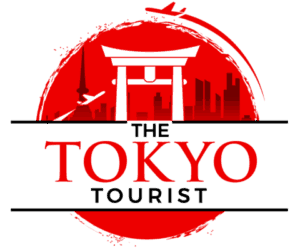Deprecated: mb_convert_encoding(): Handling HTML entities via mbstring is deprecated; use htmlspecialchars, htmlentities, or mb_encode_numericentity/mb_decode_numericentity instead in /home2/thetoky7/public_html/wp-content/themes/acabado/functions.php on line 2119
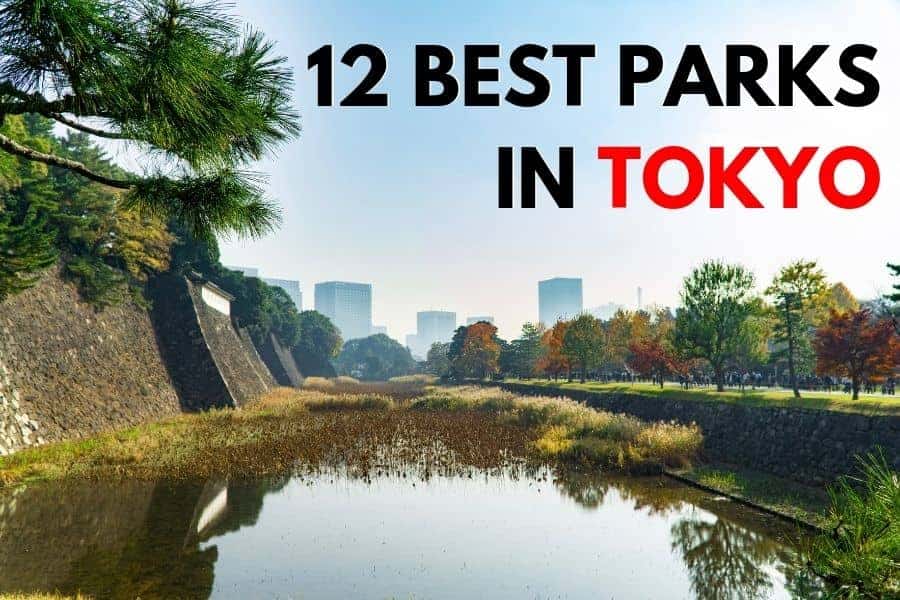
Tokyo has endless wonders, but as a nature lover, you of course gravitate towards its parks. The problem is, there’s just so many of them! You wish you could spend months in Tokyo exploring every park and nature attraction, but sadly, you just don’t have the time. What you can do is condense your park visits down. Which 12 parks are best to spend time in?
The 12 best parks in Tokyo are:
- Showa Memorial Park
- Kiyosumi Garden
- Inokashira Park
- The Institute for Nature Study National Reserve
- Odaiba Seaside Park
- Komazawa Olympic Park
- Tokyo Imperial Palace
- Chichubu-Tama-Kai National Park
- Shiba Park
- Meiji Jingu Gaien
- Ueno Park
- Yoyogi Park
If you haven’t heard of some of these destinations before, don’t fret. I’ll expand on each park on the above list, telling you where they’re located, activities and features, and other pertinent information. Then you can plan your perfect Tokyo park itinerary.
The 12 Best Parks in Tokyo
In no particular order, here’s our list of the 12 best parks to explore and enjoy in Tokyo.
1. Showa Memorial Park
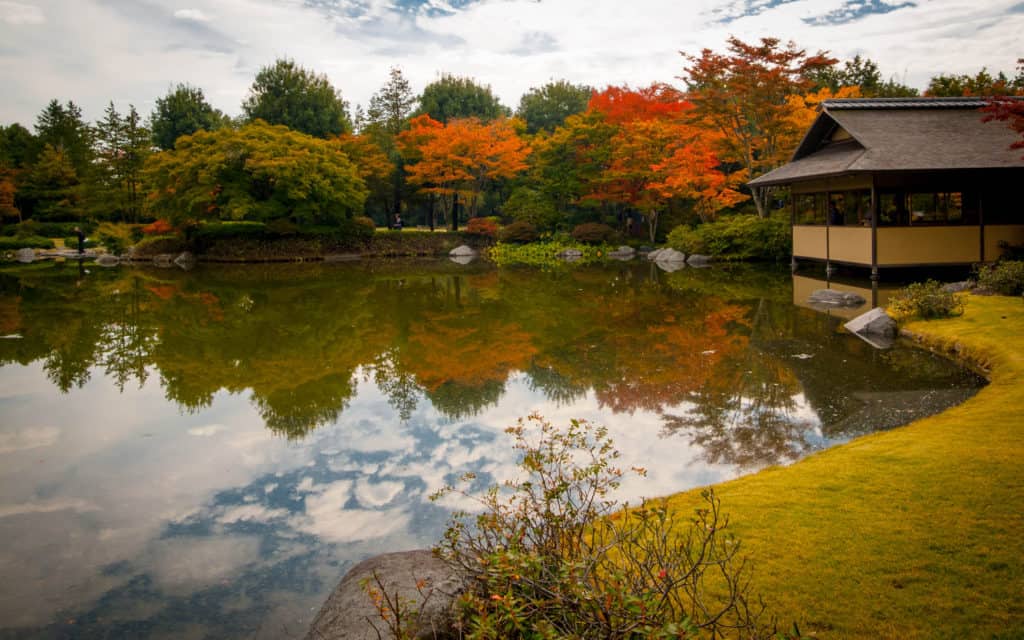
Also known as Showa Kinen Koen, Showa Memorial Park is Tokyo’s biggest. It boasts more than 404 acres of space, so you can definitely spend an afternoon here (maybe even more than one).
This Tachikawa City landmark isn’t quite near Tokyo, as the city’s on the outskirts, but it’s still worth planning a trip to. Showa Memorial Park first debuted in 1983 to honor the Golden Jubilee, an event celebrating the 50th anniversary of the emperor of Japan. To continue your history lesson, make sure you check out the adjoining museum to learn more about the Showa emperor while you’re here.
What else can you see at Showa Memorial Park? The flowers will change with the seasons, so plan to arrive in the spring to spot the cherry blossoms. The Bonsai museum will also give you your floral fill. With promenades, countless gardens, ponds, fields of endless flowers, and lawns, you’ll love how you’re so surrounded by nature.
If you need a break, be sure to check out the shops, restaurants, cafés, bicycle rental facilities, swimming pools, and playgrounds onsite. Hey, with more than 400 acres, the space has to get filled somehow.
This time of year, in the summer, Showa Memorial Park will have lots of sunflowers and hydrangeas. In the fall, the maple and ginkgo trees will get their chance to shine.
2. Kiyosumi Garden
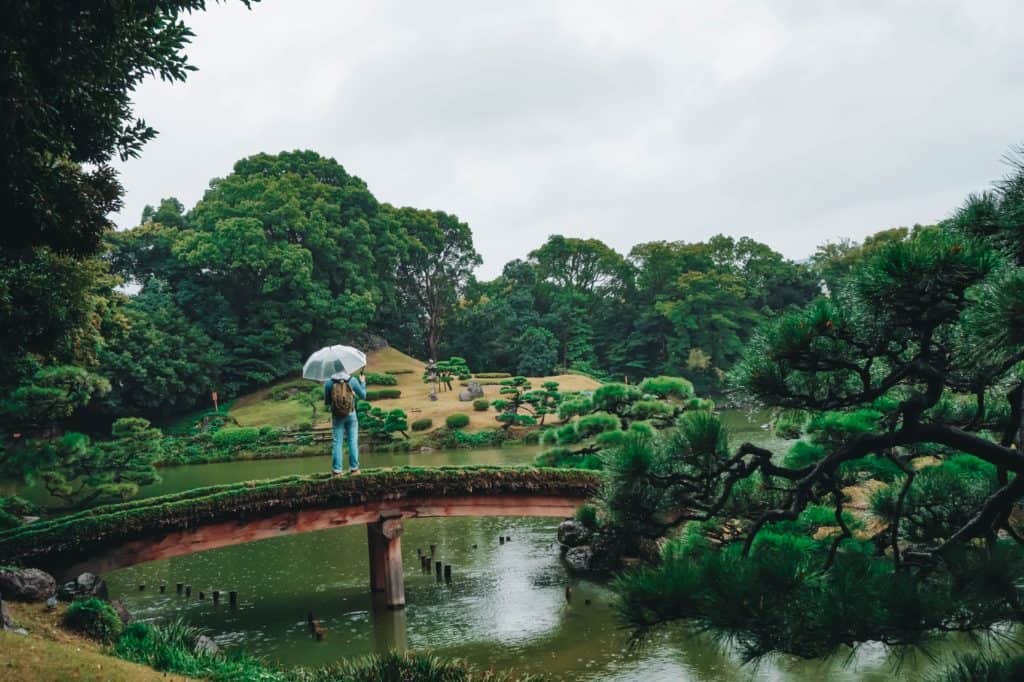
Do you want a Tokyo park with history dating back more than 30 years? Then you’ll love Kiyosumi Garden. This stroll garden has stood since 1878, or Japan’s Meiji Period. Iwasaki Yataro designed and built the park.
You’ll have to venture out to Fukagawa to see the Kiyosumi Garden, but you certainly won’t regret it. Besides, you can easily get to Fukagawa via the Kiyosumi-Shirakawa Station.
Let’s talk more about the illustrious history of the Kiyosumi Garden. When Yataro first built it, he intended it as a space for his employees to use, no one else. It was only in 1932 that the public got to enjoy this beauteous space. By that time, it had undergone some renovations, having survived the 1923 earthquake of Japan.
Lots of stepping stone pathways or iso-watari abound, letting you cross the pond (with shallow water, but still, don’t fall in!) with ease. There’s also bridges that let you get to any of the three islands that adjoin the pond. Do look into the water as you cross, as you’ll sometimes spot waterfowls, turtles, and carp.
The Kiyosumi Garden is surrounded by trees, more than 4,000 as of this writing. These include many a species, such as the Prunus campanulata or Taiwan cherry, Iris ensata, Hydrangea macrophylla, purple azaleas, and the Pinus thunbergii or Japanese Black pine.
Don’t miss the large stone in which Matsuo Basho carved a haiku, as it’s a must-see!
3. Inokashira Park
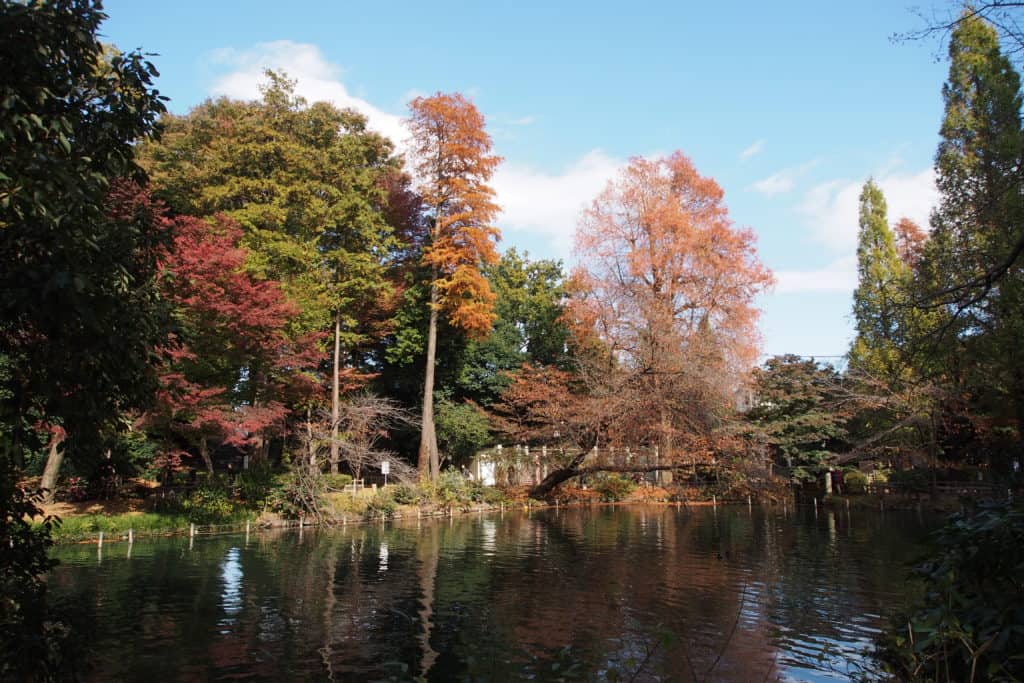
If you’re already in the western part of Tokyo for the day, then seek out Inokashira Park, specifically found around Mitaka and Kichijoji. You should aim to visit in the spring, since there’s pretty much no better park in Japan for witnessing the beauty of the cherry blossoms than right here.
The surrounding Kichijoji area has become quite beloved as well, especially among hipsters. More boutique shops and unique restaurants and cafés have begun sprouting up, with their proximity to the park the icing on the cake. There are roughly 500 cherry blossom trees scattered about the park, most surrounding a magnificent pond. If you do get here for cherry blossom season, then get to the park as early in the day as you can, as spots fill up fast!
Even if you miss the cherry blossoms, there’s no reason to skip Inokashira Park. There’s still plenty more to do here, such as visit the Studio Ghibli Museum. Head to the park’s southwest area to find the museum.
You will also spot monuments honoring Japan’s history on the grounds of the park as well as a zoo. You can even go paddle-boating when the weather warms up, riding in swan boats while cherry blossoms surround you on either side. If that doesn’t sound incredibly romantic, then I don’t know what does.
4. The Institute for Nature Study National Reserve
If you get off at Meguro Station, you’re only a short trip away to the Institute for Nature Study National Preserve. Although the name might not imply it, this is indeed a park. It’s run through the National Museum of Nature and Science (the Ministry of Education owns the grounds).
With that, you’ll see a park that’s perfectly preserved. Here, you can take in wetlands, rivers, ponds, and forests in copious amounts. Birds and insects live happily here while various species of plants and trees grow. Some trees and ponds date back to the Edo Period, where Matsudaira Yorishige, a daimyo, used to have a mansion.
Since it’s not quite a traditional park like the other ones we’ve listed thus far, you can only visit the Institute for Nature Study National Preserve at certain times. It’s open from September 1st through April 30th on any given year and then again on May 1st through August 31st. In the winter and on holidays, you can’t get in. Also, the park has hours, 9 a.m. to 4 or 5 p.m. depending on the time of year.
You also can’t enter the park for free, again unlike the other parks we’ve discussed thus far. College students and adults need to pay 310 yen to get in, or about $3 USD. If you’re under 18 or over 65, you can go to this park for free, but you do need some form of ID to prove your age. Also, the park does have free days for visitors of any age.
5. Odaiba Seaside Park
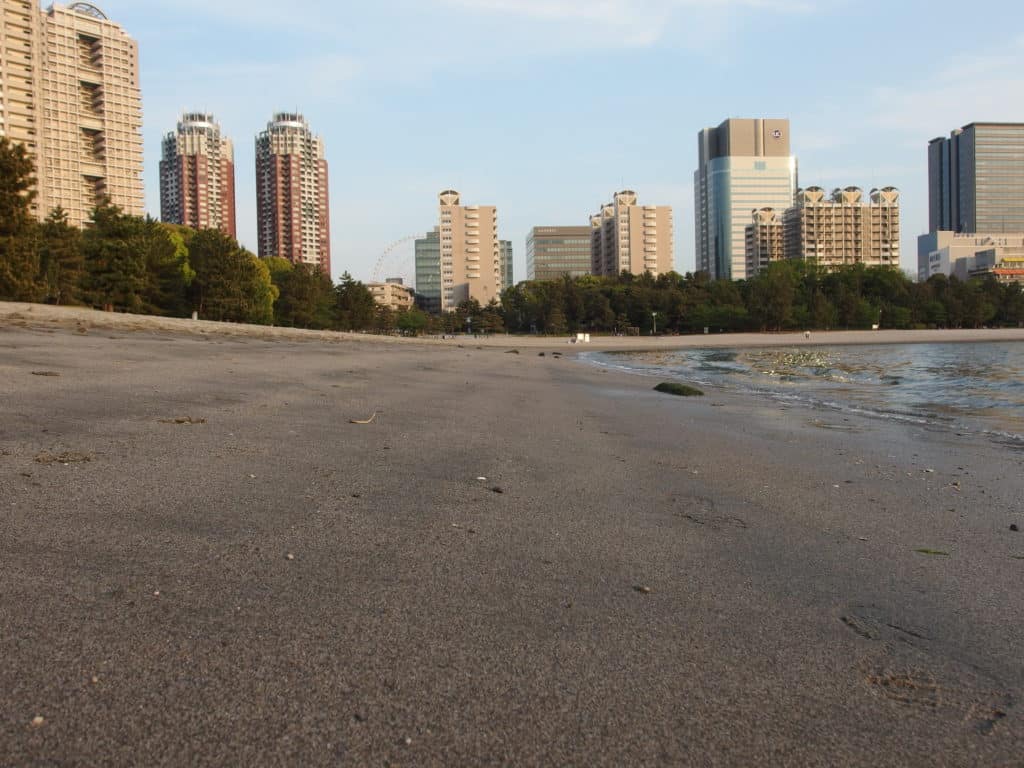
If you miss the beaches back home, then make it a point to stop by Odaiba Seaside Park. Also called Odaiba Kaihin Koen, this Odaiba Island staple is part park, part beach, all awesome. You’ll get to see great sights, such as Tokyo’s metropolis as well as the Rainbow Bridge and Tokyo Bay.
Kick off your shoes, catch some rays, and stay a while. There’s a running course and spots for engaging in maritime sports like fishing if you’re so inclined. You can ride bikes along the boardwalk or just hunker down in the sand with the sea breeze whipping in your hair. That sounds like a pretty great way to spend your day if you ask me!
When you’re done at Odaiba Seaside Park, the fun doesn’t have to end. This part of Tokyo has countless activities and entertainment. If you’re in the mood to shop, you can explore 190 stores (as well as restaurants and cafés) at Venus Fort. This shopping malls has three floors in all. The MORI Building Digital Art Museum will give you a dose of culture while the Toyota Mega Web lets you try the hottest Toyotas coming down the pike, taking them for a test drive.
You can also check out the National Museum of Emerging Science and Innovation, visit the amusement park Tokyo JOYPOLIS, go to Madam Tussauds Tokyo, or play at LEGOLAND Discovery Center Tokyo. Try to check out the Rainbow Bridge and surrounding architecture at night if you get a chance as well!
6. Komazawa Olympic Park
Also near Meguro is the Komazawa Olympic Park. You can get there from Shibuya and Setagaya as well. This spot earned such a name because it was intended for use during the Olympics. That never did happen because of the events of World War II.
Due to its design, you certainly won’t find another park like this on your travels. For instance, there’s facilities for cycling, jogging, tennis, swimming, baseball, and soccer in the Komazawa Gymnasium, which is on the grounds. You could fit close to 3,900 people in here to watch events. It has indeed been used for wrestling before. The Control Tower, which you can’t miss, is part of the gymnasium as well.
This park doesn’t sit empty most of the year; far from it. The Tokyo Ramen Show takes place here every year, as do many festivals and events. You can get some great exercise at the Komazawa Olympic Park and then enjoy some quality entertainment when you’re done. You’ll surely have lots of fun here.
7. Tokyo Imperial Palace
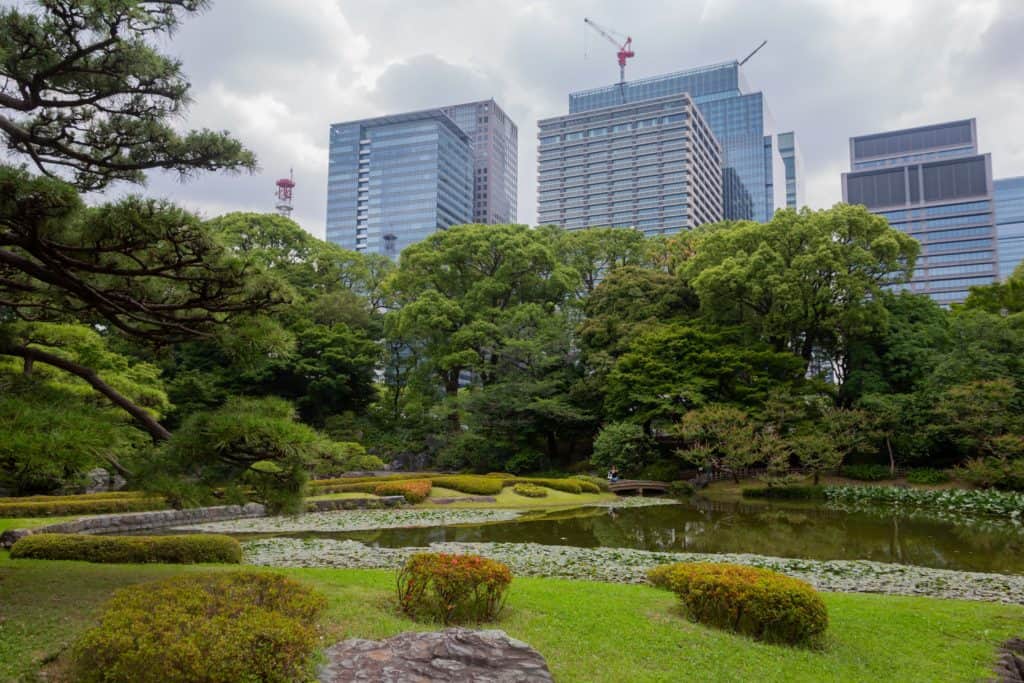
Spend a day plentifully drinking in Japan’s rich history at Tokyo Imperial Palace. Found in Tokyo’s Chiyoda ward, the Imperial Family still lives here in the Kyuden,or main palace. While you likely won’t seem them, there’s plenty of grounds to cover, so don’t worry.
Speaking of that main palace, it was once Edo Castle. The building is surrounded by 0.44 square miles of gardens you can visit. Cherry blossoms grow beautifully here, so this area gets crowded in the spring. Even in the fall, expect lots of gatherers to come by and admire the growing ginkgo trees.
The Imperial Palace East Gardens, the public part of the park, isn’t too far from several other cool landmarks. Kitanomaru Park, towards the north side of the garden, features Nippon Budokan Hall. You can also see a dedication to Prince Kitashirakawa Yoshihisa via a bronze statue.
The Suwa-no-Chaya teahouse has been around since 1912, even though it’s moved several times in the decades since. Ninomaru Garden has trees for each of Japan’s prefectures, all 260 of them. About 30 species of trees grow here.
Then there’s Tokagakudo, or the Peach Blossom Music Hall. This hall, dedicated to Empress Kojun when she turned 60 years old, spreads 13,500 square feet.
8. Chichibu-Tama-Kai National Park
This park is not in Tokyo city but in Tokyo prefecture. If you want to see some mountains, the Chichibu-Tama-Kai National Park surrounds Mount Mitake or Mitakesan. This space is heavy in acreage and, besides the mountain range, features gorges and hills. You can also see prefectures such as Nagano, Saitama, and Yamanashi here.
Become one with nature as you hike untouched paths. Worship at the Musashi-Mitake Shrine on the grounds of the park and mountain. If you keep hiking, you’ll see even taller valleys and peaks that will make your heart race and your jaw drop. The Rock Garden is located around here. Despite its name, it’s a valley ensconced in forest that has waterfalls (two of them), stones green with moss, and a pretty stream.
You’re not too far from the top now, so you might as well continue the hour or so up. Once you get to the peak, you may never want to come down. The only downside of this park is it is a little out of the way. From Tokyo, you have to venture out about two hours to get there.
9. Shiba Park
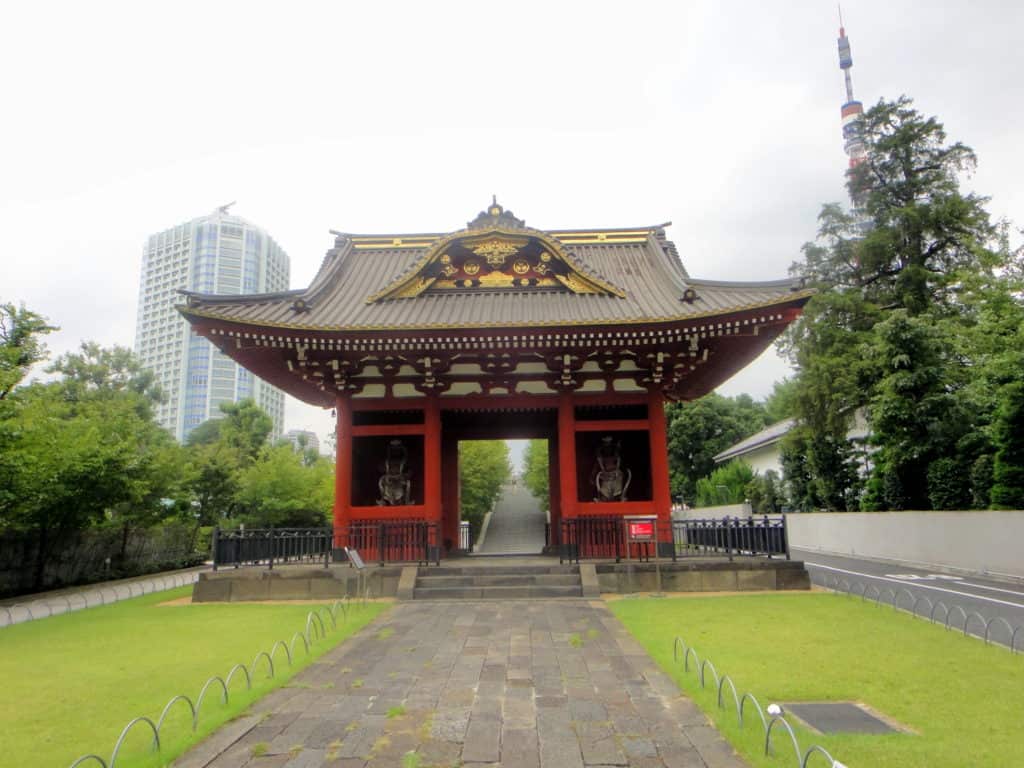
By spending your afternoon at Shiba Park, you get a two-for-one. Not only do you get to check out the park, but Zozoji Temple as well. You can also easily get to Tokyo Tower from here, giving you even more of a reason to add Shiba Park to your itinerary ASAP.
A famous spot for filming movies and TV shows based in Japan, Shiba Park rightfully attracts a lot of attention. As you start exploring the footpaths, you’ll often find they lead you towards Tokyo Tower. You might also spot the Central Labor Relations Commission on your adventures. Another landmark worth noting is the huge ginkgo tree. You’ll certainly see it if you’re anywhere near it.
Iemitsu Tokugawa planted this tree near the Shiba Tosho-gu shrine. It’s since become such a prominent landmark that it’s now an official Natural Monument. Speaking of trees, the US’s very own President, Ulysses S. Grant, once visited Shiba Park to plant his own tree. You can still find it on the grounds to this very day.
You truly cannot get better views of Tokyo Tower than the ones afforded to you at Shiba Park. Take your time, walk some paths, and enjoy the one-of-a-kind glimpses into one of the best-known towers in all of Tokyo.
10. Meiji Jingu Gaien
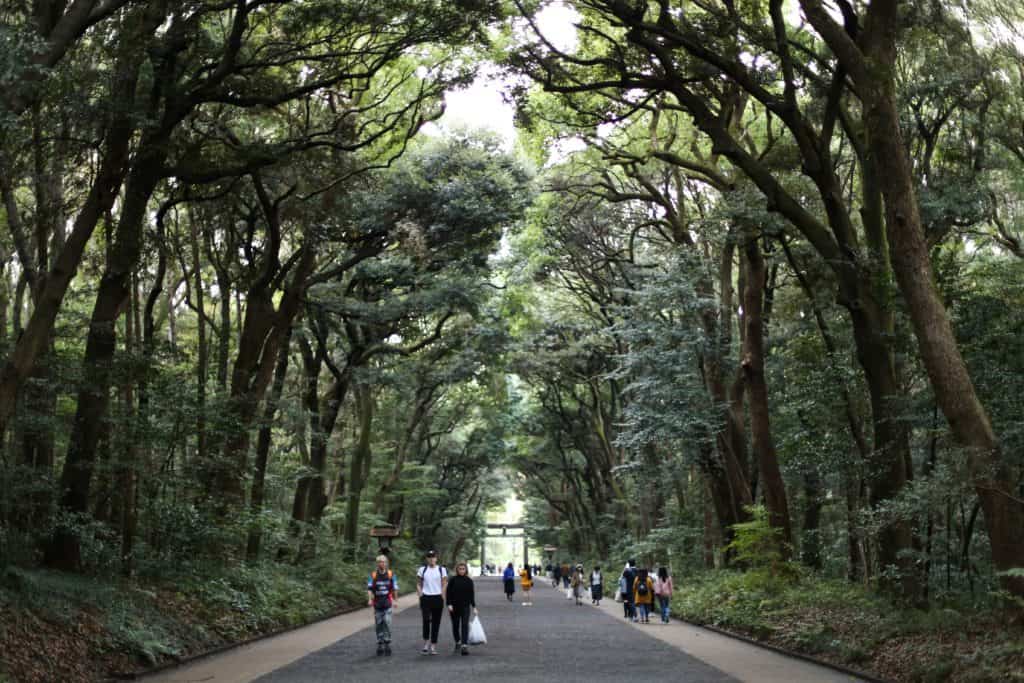
In Aoyama, there’s the Meiji Jingu Gaien, another park I recommend you slot some time in for. If you’re in Shinjuku, Harajuku, or Shibuya, it’s not too challenging to get to Aoyama.
Each November, the park comes alive as it hosts the Ginkgo Festival. This lasts through December. The park also houses the Jingu Stadium where you can see the Tokyo Yakult Swallows play baseball. If you want to talk history, before the Jingu Stadium, there was the Meiji Jingu Gaien Stadium. This dates back to at least the 1930s, as the Far Eastern Championship Games took place here that year. These Tokyo games featured competitors playing several sports to see who came out on top.
In 1956, when officials decided to make the Tokyo Olympic Stadium, the Meiji Jingu Gaien Stadium got taken down. At least there’s still the Jingu Stadium today.
11. Ueno Park
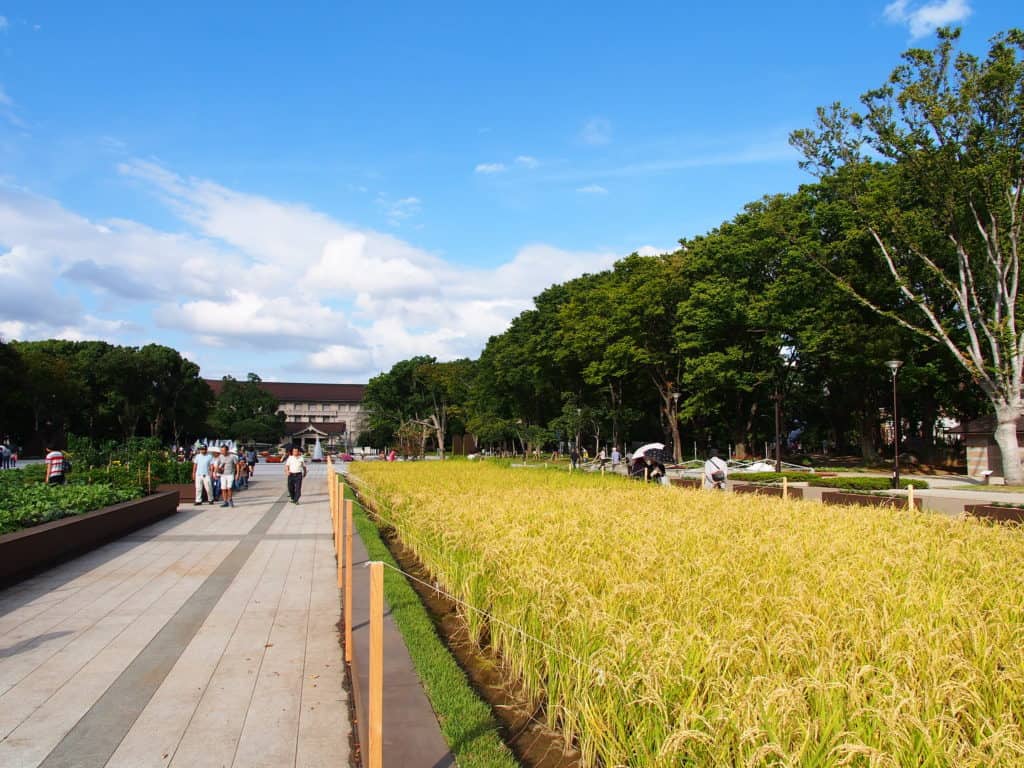
No list on the best parks in Tokyo would be complete without mentioning Ueno Park. I should caution you that this place is almost always crowded with tourists. That’s because they want to see such famed spots as the park’s temple, shrine, museum, and the Ueno Zoo.
It gets even busier in the spring, especially when the cherry blossom festival Sakura Matsuri takes place. To get away from all the hustle and bustle, you can pop into the Starbucks Ueno Onshi Park Store for a drink, spend a few hours at the National Museum of Western Art or the National Science Museum, or relax by Shinobazu Pond.
There’s also Toshogu Shrine, the Tokyo National Museum, the Kiyomizu Kannon Temple, and the Kaneiji Temple on the grounds.
12. Yoyogi Park
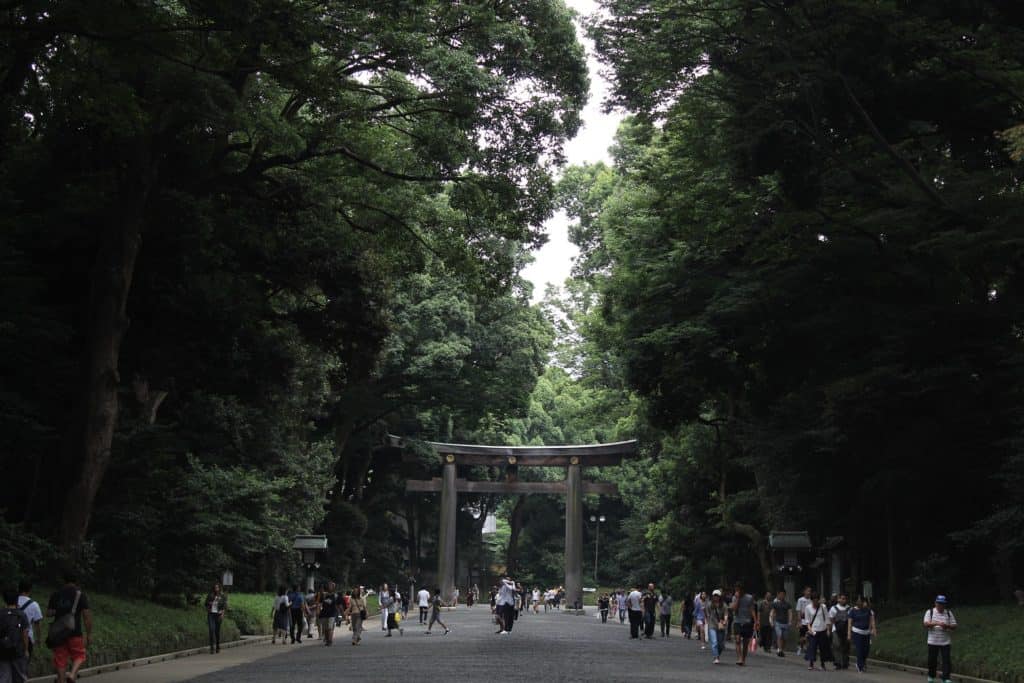
Last but certainly not least, there’s Yoyogi Park. Close to Shinjuku and Harajuku, this oversized park attracts many nature lovers. They like to spend afternoons picnicking and taking in the amazing sights and sounds here.
Once the weekend arrives, Yoyogi Park becomes the home to flea markets, food events, and festivals held throughout the year. In July 2019, the park will have the Ocean Peoples beach flea market, Songkran Festival, and Taiwan Festa. This features sim sums, noodles, pineapple cake, bubble tea, and lots of other delectable treats straight from Taiwan.
If you’re passing by Yoyogi Park this August, make sure you check out the Sri Lanka Festival, Thai Fair, and Harajuku Omotesando Super Yosakoi Festival throughout the month.
Conclusion
There you have it! The 12 parks I talked about today are all accessible from where you’re staying in Tokyo. Although some require longer trips than others, each has its own beauty, history, and acclaim. Try to make some time for them all if you can!
